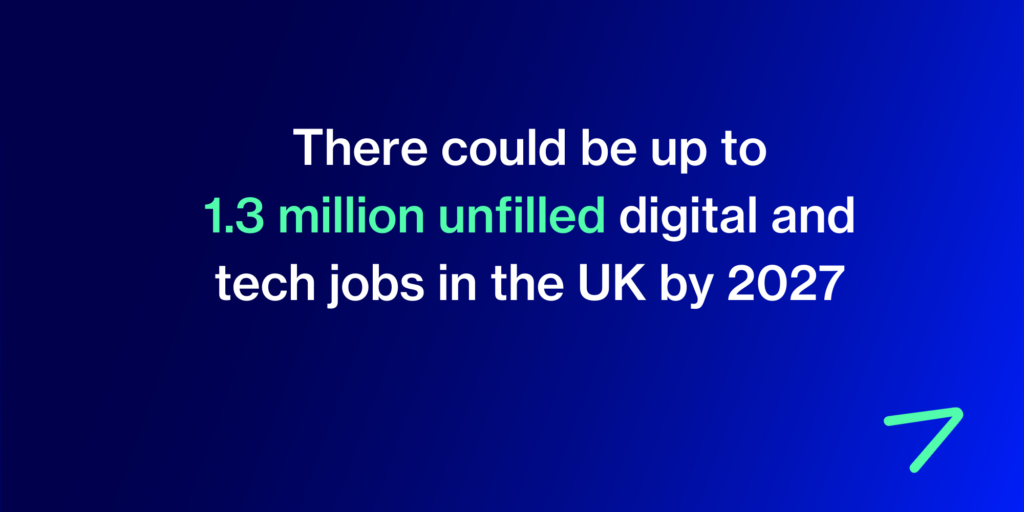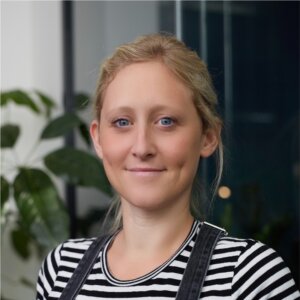Over the past year or so, the forecasted financial downturn has made headlines everywhere and businesses have been tasked with the appropriate prep work to weather any unexpected difficulties. As expected, the world of talent has since started to contract – seen in the high attrition rates, redundancies announced across several sectors and hiring freezes altogether. Whilst the economic uncertainty hasn’t had the best effects, these periods are historically well-documented and can be properly prepared for. In this article, we’ve totalled ten of the most important trends shaping talent acquisition landscape in 2023 to help share the ways in which business leaders can prepare ahead.
1. Workforce planning for an economic downturn
Strategic workforce planning is top of mind and for good reason. Estimates surrounding the impact of 2023’s financial downturn triggered many businesses to respond quickly, prompting hiring freezes, cost cutting, and redundancies. However, based on data from the aftermath of the Great Recession in 2007–2009, it is suggested that companies who take this approach will have only a limited possibility of full recovery once the economy returns to normal.
The best teams are producing multi-scenario plans to cover off the event spectrum with their finger firmly on the pulse, monitoring market conditions closely. In order to retain the best possible chances of longevity and steer away long-term damage, businesses are urged to embed a robust strategy capable of a quick recovery into hiring once the recession ceases.
2. The great return to the office
As with most influential trends in workplace discourse, the Great Return has been predicted a comeback for some time now, with businesses going through transitional changes since the pandemic. In the last year or so, businesses have been shaping and adjusting their workplace policies to suit a hybrid of needs – above all else, flexibility. Many have been tasked with the challenge of producing a ‘destination workplace,’ a place where employees choose to be, rather than need to be. In the next 12 months, we can expect to see a full range of in-person and hybrid models to be on the agenda for businesses with the intention that this will improve collaboration, innovation and creativity.
Already ahead of the curve, corporate giants such as Apple, Google, and Unilever have already announced their plans for getting staff at least partially back onsite. Others, like investment bank Goldman Sachs, are pushing for a return to full-time in-person work for all employees.
Still in hot debate, a survey showed that 37% of HR leaders anticipate a shift in working patterns that will require employees to work from the office more often. But at the same time, 48% believe a full return to office would hurt their ability to attract and retain talent. Whether businesses choose to mandate a full RTO or not, retention will be a key indicator of effective decision-making in the year ahead.
3. Increased internal mobility, upskilling and rise of the boomerang employee
As businesses shift towards internal mobility, it is becoming increasingly common for “boomerang employees” to return to their former employers. These individuals, who may have previously left in pursuit of new opportunities, now present a valuable pool of candidates for recruiters and hiring managers to consider. Not only do they possess a familiarity with the organisation, but they can also seamlessly transition back into their roles with minimal training required. It is crucial for organizations to recognize the potential of boomerang employees and actively consider them as candidates for open positions.
In 2023, businesses that want to eradicate high attrition rates, should think about developing an internal mobility strategy, which both creates an accessible source of talent and supports better retention.
4. Data-driven recruitment strategies – DE&I
As we move into 2023, achieving inclusive hiring practices is top of mind. In order to effectively evaluate and improve processes in this space, more and more talent acquisition teams are turning to data-driven approaches.
Where in recent years, DE&I became a key part of talent discourse, this year we’ll see more business turn focus on using data practice to drive efforts to support equity in the workplace. By utilizing demographic data in conjunction with metrics such as pass-through rates and interview feedback, recruiters can identify and address equity gaps in their recruitment funnel. As the importance of diversity, equity, and inclusion in the workplace continues to grow, it is crucial for organizations to adopt this data-driven approach to achieve more inclusive hiring outcomes.
5. Increased automation and AI of recruitment tasks
Naturally, in times of economic uncertainty, businesses need to be sure that the tools they invest in will truly save them money in the long run. So, while spending on recruitment automation may increase in 2023, businesses would be wise to spend time calculating the ROI that each tool or software solution can give them before investing.
Currently, only one in four businesses use automation or AI to support their HR efforts, including recruiting and hiring according to a report by SHRM. This could very well change as more businesses look to cut costs and boost efficiency in the face of recession.
6. Focus on wellbeing and work-life balance
As we move into 2023, the subject of employee mental health is becoming increasingly critical for business leaders to address. A study conducted in 2022 found that an alarming 89% of employees reported experiencing burnout at some point in the past year, emphasizing the need for employers to take proactive measures to support their employees’ mental well-being. This can include implementing policies that promote a healthy work-life balance, providing access to mental health resources such as counselling and stress management programs, and creating a culture that encourages open communication and support around mental health.
Furthermore, as mental health has a direct impact on productivity, employee engagement and retention, employers should consider incorporating mental health support as a key element of their Employee Value Proposition (EVP) strategy. This will not only improve the well-being of employees but also enhance organizational performance and competitiveness in the long run.
7. Recruitment recognised as a strategic role
Predicative insights from a 2019 LinkedIn report suggested that the role of the recruiter would transition from sales-focused to business-oriented over the next few years. Fast-forward to 2023 and more of the administrative parts of the recruitment process are automated and the role of the recruiter has undergone a significant shift. With the rise of automation and outsourcing of repetitive, administrative tasks, recruiters are now being called upon to play a more strategic role in talent acquisition. This includes utilizing market knowledge and perspective, problem-solving, and aligning recruitment efforts with overall business goals.
Moreover, in the face of high attrition rates and fierce competition for top candidates, recruitment is increasingly being seen as a strategic function within organisations, with recruiters expected to play a key role in transforming talent acquisition processes.
8. Ongoing talent shortage will dominate business decision-making
The ongoing talent shortage will continue to dominate business decision-making in hiring in the UK. According to a recent survey by the Recruitment and Employment Confederation (REC), nearly two-thirds of UK employers have reported difficulties in filling job vacancies in 2022.
The situation is particularly acute in certain sectors such as IT and Engineering, where the skills gap is particularly wide. The shortages have led to increased competition for talent and higher salaries. A report by the Office for National Statistics (ONS) found that average weekly earnings for permanent employees in the UK increased by 4.5% in 2022, the fastest rate of growth in over a decade.
As a result, businesses are having to be more strategic in their hiring, focusing on recruiting and developing the skills they need to stay competitive. This is likely to lead to increased investment in training and development programs, as well as a greater emphasis on employee retention and engagement. Additionally, businesses will likely also have to be more creative in their recruitment efforts, using social media, employee referrals, and other tools to reach potential candidates.
9. Web 3.0 technologies will transform all aspects of people’s lives
Artificial intelligence and the Internet of Things, more and more companies are turning to new technology to streamline and improve their hiring process.
According to a recent survey conducted by the Society for Human Resource Management (SHRM), over half of organizations have reported using AI in their recruitment process, such as chatbots, to assist with screening and scheduling interviews. Additionally, a significant number of organizations are also using virtual reality for interviewing and assessing candidates, and language models such as ChatGPT to make the job adverts and related collateral sleeker and inviting.
Businesses are to focus more on recruiting and developing employees with the skills required to work with these new technologies to better support these new tech adoptions. This could mean recruiting employees with expertise in areas such as data science, blockchain, and AI. As new forms of collaboration and communication become possible, businesses will also need to adapt their recruitment and retention strategies to take advantage of these new opportunities. In order to stay competitive, companies will have to embrace new technologies and the skills they require to thrive in this new era in tech innovation.
10. Pay transparency will become the new normal
Pay transparency will continue to be a key component of change in the world of work. According to a survey by the Chartered Institute of Personnel and Development (CIPD) conducted in 2022, more than 60% of UK employers have introduced pay transparency, and more businesses are expected to follow this trend in 2023.
Another study by the CIPD found that businesses with more transparent pay practices had considerably lower turnover rates among their employees, highlighting the business case further for pay transparency. As part of the wider discourse on equity and disparity in the workplace, CIPD also found that businesses with greater pay transparency have a more engaged workforce, with employees being more likely to recommend their employer to friends and family.
Arrows Group have recently signed up to the Earn Your Worth initiative where we no longer ask our candidates to divulge their salary history, in a bid to cut pay gaps and improve equity across the creative industries. We believe asking for salary history perpetuates gender, ethnicity, sexuality, and disability inequality; and allows for unconscious bias to take control. There is clear evidence which indicates that when making this simple, low-cost change to the hiring process, it can positively impact pay inequality. This will be especially important as businesses increasingly compete for top talent in a tight labour market and will be seen to attract, retain and engage employees.
If you’d like to talk about your talent acquisition strategies, regardless of whether you’re looking to hire now, or in the near future, then reach out to us on talk@arrowsgroup.com.



